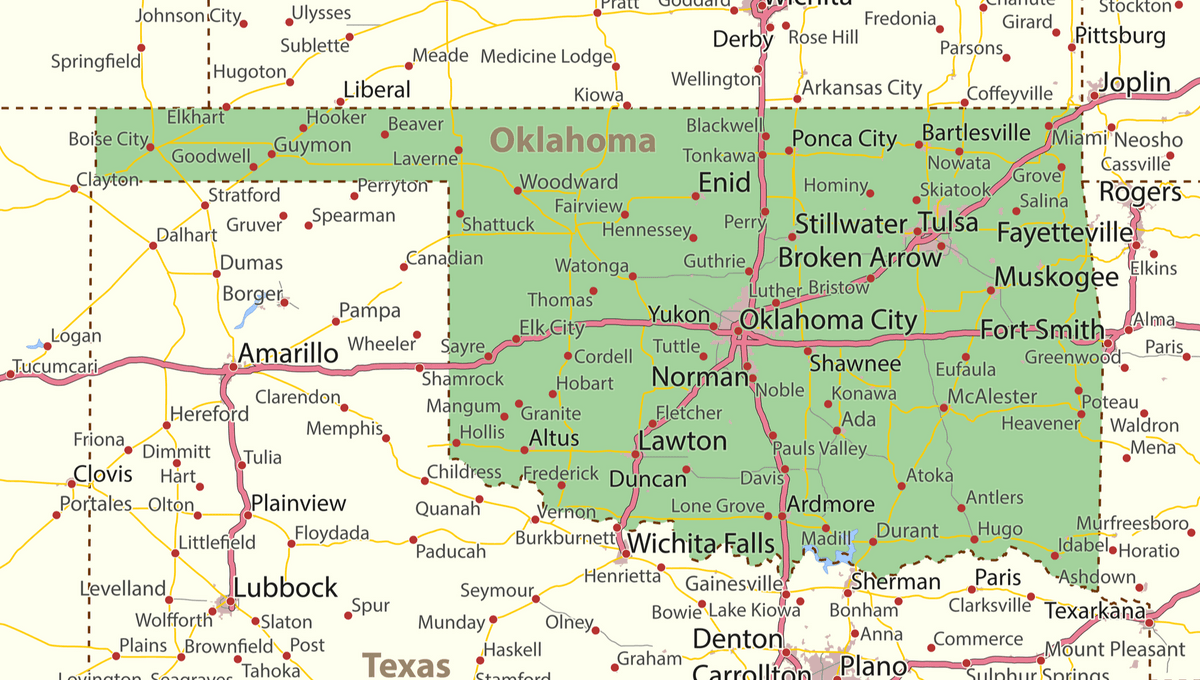
The story of how Oklahoma’s borders ended up looking like a cooking pot with a handle is one steeped in the state’s unique history and the legacy of slavery.
Take a look at a map of the US and you’ll see the shape of Oklahoma is relatively rectangular-shaped except for a 106-kilometer (66-mile) strip of land awkwardly poking out of its top left corner towards New Mexico. It quite literally sticks out like a sore thumb.
Beneath this band of land, known as the Oklahomo Panhandle, is the state of Texas which looks as if it could encompass this strip quite comfortably. However, drawing up borders is rarely that simple.
It all starts when Texas formally declared independence from Mexico in 1836. The Republic of Texas existed as an independent nation until 1845 when it was admitted to the Union as a slave state.
However, under the Missouri Compromise of 1820, slavery was forbidden north of the 36°30′ parallel. In order to not fan the flames of this growingly contentious issue, Texas snipped off a few dozen kilometers from its northernmost border, which was largely uninhabited except for a few herding communities.
And so, this unusual strip of land was left hovering like a landlocked island.
By the 1880s, the strip was declared public domain and subject to “squatter’s rights,” causing a flood of immigration. The area was known as a Public Land Strip but became nicknamed No Man’s Land since it was essentially a lawless zone, run by self-governing collectives of squatters and ranchers who often ruled by mob justice and vigilante justice.
The settlements grew into “squatter towns,” but little farming took place, owing to the lack of money in the area and its distance from important trade hubs.
By 1890, it became apparent to the central government that the situation needed to be resolved. The Oklahoma Organic Act of 1890 assigned Public Land Strip to the new Oklahoma Territory and, in 1907, it became fully unified into the state of Oklahoma.
The hard times for the Oklahoma Panhandle were not over yet, however. The infamous droughts of the 1930s severely impacted this strip of land, effectively turning the Panhandle into the epicenter of the Dust Bowl. Death, poverty, and desperation quickly followed. If you want a vivid illustration of how grim this time was in Oklahoma, look no further than John Steinbeck’s 1939 novel The Grapes of Wrath.
Even today, the Oklahoma Panhandle’s exceptional history can still be seen. The Panhandle has a population of just 29,000, less than 1 percent of the state’s total population, and the rate of people living in poverty is higher than the national average.
Source Link: Why Is Oklahoma Shaped Like A Cooking Pot With A Panhandle?